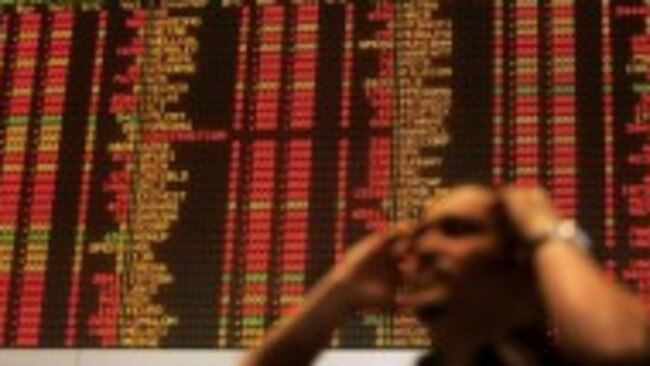
Keep away from index funds and ETFs, they cry, the market is too tough for investors to blindly follow an index-style fund when returns are as modest as we have seen in recent times.
It’s called the “active versus passive debate” and it has certainly lifted a notch because those modest returns have made fund manager fees more expensive in relative terms.
But rather than flinging mud back at the active managers — operating inside the big four banks and our major insurance companies — the passive brigade has instead made two killer moves.
The first move is to reveal quite plainly how the active managers are performing — and they are performing dismally.
The second move is to continually cut prices — or fees — to the point that active managers look very expensive indeed.
Poor performance
AS any seasoned investor will tell you, there is a place for the passive and active management styles in any portfolio, but what is truly worrying is that the key arguments put forward in favour of the active style have been undermined just days ago by a dramatic new report from Dow Jones.
Until very recently investors had taken it for granted that big funds buying mainstream shares offer little extra value. Indeed the numbers have been bad for years. The majority of funds offering to manage a conventional basket of Australian shares or indeed overseas shares often fail to match the very indices they benchmark against.
But the latest Dow Jones’ Indices versus Active Australia Scorecard is an indictment of most fund managers. The majority of funds — the vast majority in some sectors — fail to beat their benchmark indices. (see breakout box)
Whichever way you look at it, this is utter failure.
The only reason you would offer a product which parcels a range of shares for investors and hire expensive professionals to run the numbers for you, not to mention their marketing departments, is that they would beat the index.
Six out of 10 large cap Australian funds failed to beat the relevant benchmark in the last 12 months to June 30. This is hopeless and, remember, the performance of the market is irrelevant here.
Last year was a poor year on the ASX. All these guys had to was to match the index and they could not do it.
You don’t have to be an auditor to figure out the real reason the numbers are so bad is because when returns are so low the effective expense ratios of the managers go through the roof.
But here’s the worst part: in the categories where the active managers are supposed to add value, they have not only failed to match the index, but they performed worse than their big cap peers.
A large majority of the fund managers specialising in mid and small caps — where there is a clear opportunity to add value — failed to beat the benchmark.
This is terrible. We are supposed to be in a “stock pickers market” — a sweet spot for small cap fund manager.
But there are nearly twice as many duds as there used to be. On a five-year basis 38 per cent of funds underperformed and over the last 12 months the underperforming funds soared to 61 per cent of all funds.
The obvious conclusion here is that a load of new entrants jumped into the game hoping for easy pickings and got trounced.
Separately, you would expect the international fund managers to add value.
After all, they have real skills, they know all the best brokers and fund managers overseas — they visit them, they know the companies, they can study the numbers on the NYSE and Nasdaq with expert eyes …
Nope, wait for it, this is the outstanding dud category — an unbelievable 80.73 per cent underperformed the index in a one-year period (and that was an improvement on the previous 5 year period when it was 92 per cent).
Honestly, these figures are laughable.
ETFs slash fees
It must be absolutely depressing for the fund managers of Martin place and Collins Street to find out on the very week Dow Jones released this exposure of their profession, ETFs operators announced another round of price cuts.
One of the giants in the passive investing scene — Blackrock, the manager with $1 trillion under management around the world — announced it was cutting its fees on ETFs for Australian investors in several key funds. At the flagship iShares S&P 500 ETF the fees have been cut from 0.7 per cent to 0.4 per cent.
According to Jon Howie, head of IShares Australia, this means that Australian investors using ETFs on the ASX are paying the same fees as American investors buying the same product on Wall Street — this has been the ultimate target for some years since ETFs first came to the market in Australia about 15 years ago
Of course there are still good fund managers in every category and ETFs are far from perfect … but what is amazing for Australian investors is that ‘active’ fund managers — who have on average woeful records — are still charging 1 to 2 per cent base management fee and up to 15 per cent performance fees.
Mind you, judging by recent results there is little risk you’ll ever have to pay performance fees.
Fund Manager’s Shame File
Australian General Equity (Large-Cap) Funds
59.7% underperformed the S&P/ASX 200 Index over one year
69.2% underperformed the benchmark in a five-year period
Australian Equity Mid- and Small-Cap
61.3% underperformed S&P/ASX Mid-Small Index over one year
38.0% underperformed the benchmark in a five-year period
International Equity General
80.7% underperformed the S&P Developed ex-Australia Large Cap Index in a one-year period
91.9% underperformed the benchmark in a five-year period






It’s a bit like your local Woolworths store owner pleading with you not to shop at Aldi: Australia’s big fund managers are now openly bagging index funds and exchange traded funds (ETFs), which simply mirror share market indices and promise nothing more than a fund that matches the index.